Note: To celebrate the 20th anniversary of the Hubble Space Telescope, for ten days, Universe Today will feature highlights from two year slices of the life of the Hubble, focusing on its achievements as an astronomical observatory. Today’s article looks at the period April 1994 to April 1996.
After the famous Apollo 8 “Earthrise” image, comet Shoemaker-Levy 9’s impact with Jupiter, in July 1994, strikes us as the most stark reminder of the fragility of our home. And the Hubble gave us the clearest pictures of just how destructive that collision was; those dark blotches are bigger than the Earth.
Equally memorable, from Hubble’s early childhood years – ages five and six – is the “Pillars of Creation” image.
[/caption]
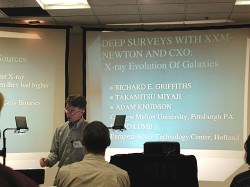
Much of the Hubble’s time in the first few years was devoted to the Hubble Space Telescope Key Projects, two of which I mentioned yesterday, “on the Extragalactic Distance Scale”, and the “Quasar Absorption Line” Key Project. There is a third, the Medium-Deep Survey (MDS), lead by Richard Griffiths, who is now at Carnegie Mellon University. Here’s a nice bit of trivia: astronomers spend an inordinate, a humongous amount of time doing surveys; they even build entire observatories devoted exclusively to them (think Sloan Digital Sky Survey, of Galaxy Zoo fame)! And here’s a question for you: why? Why are surveys soooo important to astronomers?
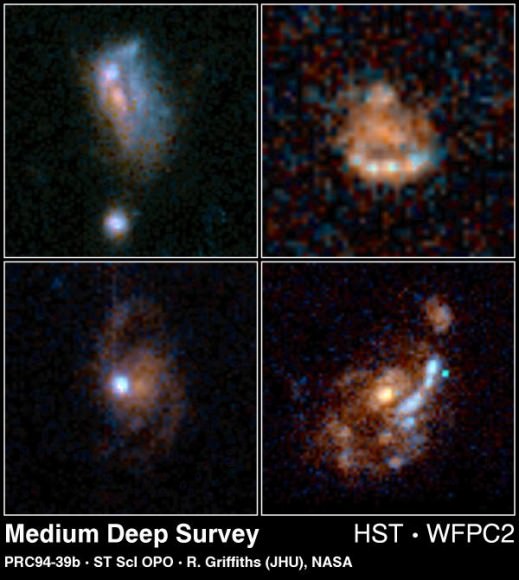
Anyway, MDS is interesting for another reason too; it’s a “parallel mode” project … while the Hubble is pointed at its main target, a nearby field is also observed, using WF/PC or the Faint Object Camera (or, later, WFPC2); two results for the price of one! However, perhaps more than any other observations, the MDS ones before the Hubble had its vision fixed (see yesterday’s article) suffered from the mis-figuring of the primary mirror. And it’s a tribute to the ingenuity and perseverance of Griffiths and his colleages that they were, eventually, to wring so much good science from the data (you guessed it, hundreds and hundreds of papers).
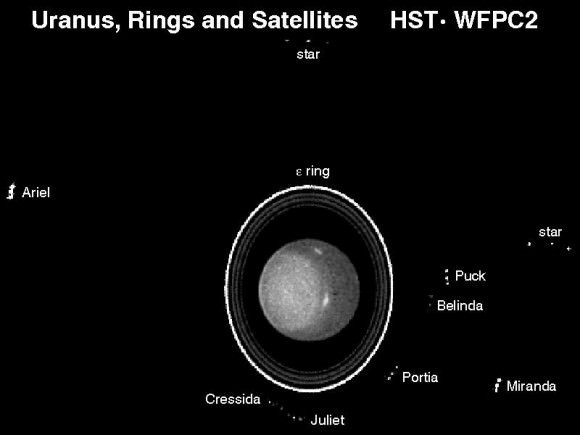
Jupiter wasn’t the only solar system object of interest to Hubble; Uranus, its rings and inner moons captured on film (well, CCD); the first surface features on Pluto were snapped; Saturn’s Aurorae imaged; the Galilean moons of Jupiter mapped; etc, etc, etc.
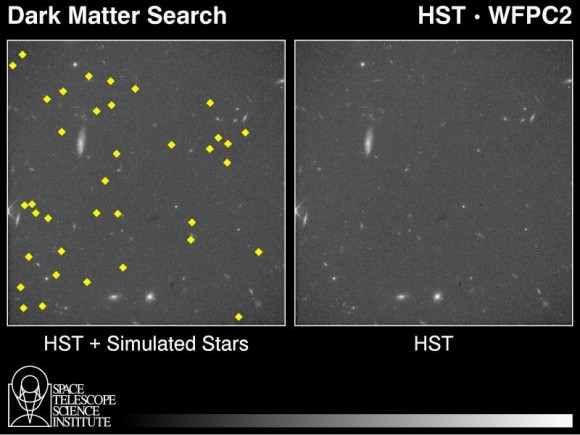
My own favorite Hubble recollection from these two years is (another!) paper by John Bahcall, “M dwarfs, microlensing, and the mass budget of the Galaxy“, which basically proved that the Milky Way’s halo is composed principally of non-baryonic dark matter. I remember reading it and thinking, “nah, that can’t be right, you guys can’t conclude that from that data!”, but the more I gnawed at it, the more it struck me just how simple, yet profound, this work was (pay attention you fans of Universe Puzzle, there’s a clue to a future puzzle here).
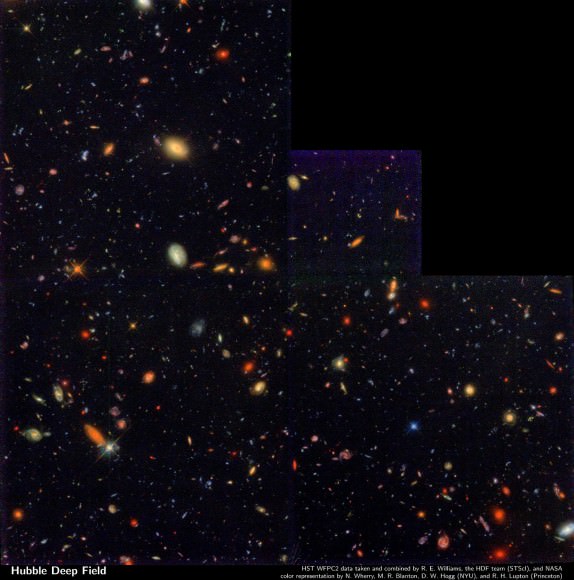
Finally, towards the end of the time I’m covering in this article, Hubble took the famous Hubble Deep Field. The version posted here you may not have seen before, because it uses a different color transform, by Robert Lupton (more images using this technique here).
Tomorrow: 1996 and 1997.
Previous articles:
Hubble’s 20 Years: Time for 20/20 Vision
Hubble: It Was Twenty Years Ago Today
Sources: HubbleSite, European Homepage for the NASA/ESA Hubble Space Telescope, The SAO/NASA Astrophysics Data System


I can remember the exact moment that I became hooked on astronomy for the rest of my life. That moment was when I saw the pillars of creation image, fresh from Hubble, on the news one night.
The image stunned me, but so did the numbers they were bandying about in relation to it – tens of trillions of kilometers long! The number blew my mind at the time, and still does. How could one wrap their mind around something so immense? And yet there it was, right in front of me on the screen!
Then, not too long afterwards, the HUDF came along and forced my brain into conniptions trying to come to terms with a whole new sense of scale.
The feeling I got that night when I saw the POC image is never far from me now – pure dumb-struck awe at such an incredible universe, and our equally surprising and incredible ability to understand it.
—Carl Sagan, interview with Charlie Rose, 1996.
Statistics! It’s all a matter of numbers…. 😉
DrFlimmer:
Yeah, especially if you do your calculations in ergs! 😉